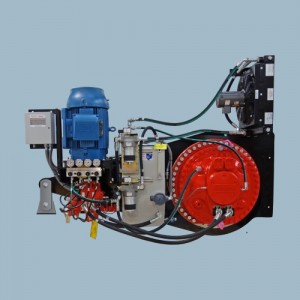
Completely self-contained, compact design, with high reliability and long service life, the new TADS design makes it a cost-effective alternative to electromechanical systems.
The Hägglunds TADS is a completely self-contained system and comes with either internal splines or a hollow output shaft with a compression coupling that easily mounts directly to a machine’s drive shaft. Flexible shaft couplings and associated alignment problems, extra long hoses or lines, and control lines between conventional power unit and motor are eliminated.
Small Footprint
Hägglunds’ way of using hydraulics to produce rotation delivers a number of benefits electromechanical systems can’t. For example, the direct drive system eliminates gearboxes and the need for heavy pedestal foundations, which shrinks installation costs and saves valuable floor space.
Easy to service
The compact open design affords easy access for routine maintenance.
Power when needed
TADS delivers maximum torque from zero speed with infinite start, stop and reverse, which will not damage the system. This feature can add an all-new level of productivity for some applications, in particular apron feeders, belt feeders, belt conveyors, and infeed conveyors in the bulk material handing & mining, recycling, cement, and pulp & paper industries. The newly reconfigured design brings TADS into the lower power ranges where its low TCO (total cost of ownership) makes it an alternative to electromechanical systems.
The Hägglunds TADS unit features fast hydraulic pump compensators that can reduce the wear and lengthen the life of any machine. Load-sensing and power-limiting tools enable operators to intelligently sustain peak levels of operation that outperform other systems–boosting machine uptime and helping reduce total cost of ownership.
Bosch Rexroth
www.boschrexroth-us.com/hagglunds
Filed Under: Fittings, Couplings & Adapters